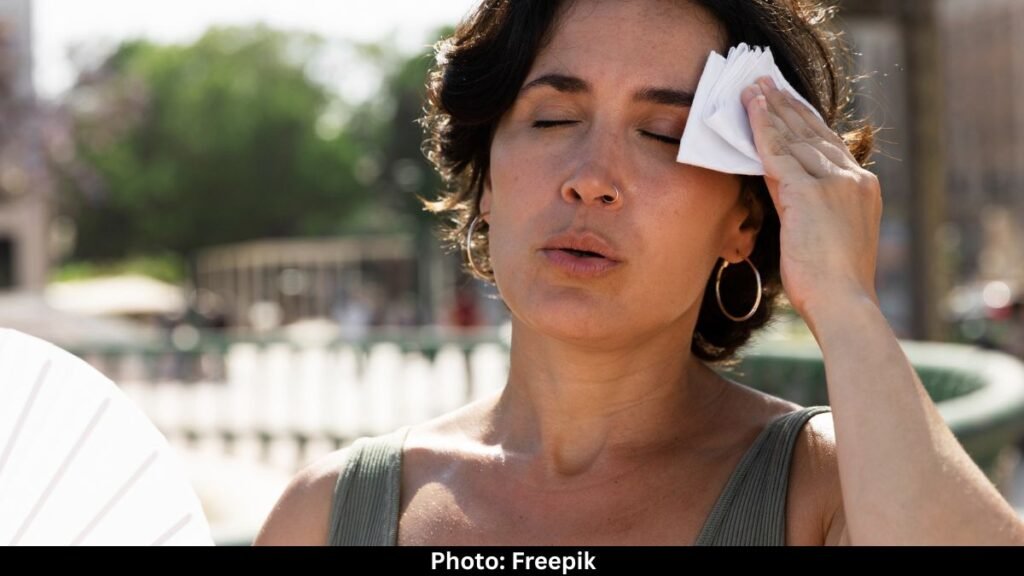Let’s not sugarcoat it. Iran is burning up, literally. The temperature has pushed past 50°C in several cities. Daily life has slowed to a crawl. Electricity is failing. Water is disappearing. People are scared, exhausted, and wondering how much worse this can get.
This isn’t just about a hot summer. It’s a warning.
According to Iran’s National Meteorological Service, this is the most brutal week of the year. Not by a little, by a lot. The capital Tehran is sitting around 41°C, but with concrete, glass, and no wind, it feels like walking inside an oven.
In the southern city of Shabankareh, temperatures hit 52.8°C. That’s one of the highest recorded on Earth this year.
Hotter, Like the Sky Is on Fire
Here’s the thing. Numbers don’t capture what it feels like. Step outside and your skin stings. Your shirt sticks to your body. Your eyes dry up in minutes. Tehran resident Hossein Hassan, 50, told a reporter: “It feels hotter than 45. You step outside and it’s like your skin is on fire. I’ve started showering twice a day just to cool down.”
That’s not an exaggeration. It’s daily life now.
Shops are closing early. Roads are empty during the day. Schools and offices are adjusting hours or shutting down. People are staying home, not because they want to, but because they don’t have a choice. The heat makes everything harder, moving, thinking, working.
And that’s if you have access to water and electricity. Many don’t.
No Power, No Water, No Relief
In parts of Mashhad, water supplies are shut off for 12 hours a day. Rolling blackouts are common. Households go 9 to 12 hours without power. Fans don’t work. AC units go dead. Hospitals are struggling to run emergency generators.
People are scared, not just of the heat, but of what comes next.
Iran’s water crisis didn’t start this week. It’s been building for years, and now it’s breaking. The country has faced below-average rainfall for five straight years. Most of its dams, once a source of pride and progress, are either empty or drying up fast.
Energy Minister Abbas Aliabadi recently admitted that Iran is now talking to neighboring countries, Turkmenistan, Afghanistan, Uzbekistan, and Tajikistan, about importing water.
Read that again. Iran is trying to import water.
Reservoirs Are Failing. Load-Shedding Is the New Normal.
The big reservoirs that powered Iran’s infrastructure are struggling to function. Load-shedding, or planned power outages, has become normal in cities. This isn’t just about comfort, it’s about survival. Food in fridges is spoiling. Medical equipment is shutting down. Even communication networks are taking a hit.
Ehsan Ali, a 35-year-old in Mashhad, says, “The dam near us is almost dry. Afghanistan’s Herat dam has made things worse. We get 9 hours of blackout every day. People are afraid. And they should be.”
That’s what most reports don’t fully show. Yes, the temperature is insane. But the real crisis is the fear it creates. Fear of not having water tomorrow. Fear of losing a loved one to heatstroke. Fear that nothing is being done while climate change pushes us closer to collapse.
Iran’s president Masoud Pezeshkian didn’t hold back. He told his cabinet, “The water crisis is far bigger than what people think. If we don’t act now, we may soon face a situation with no way out.”
That wasn’t politics. That was panic.
Climate Change Is Here, and It’s Not Going Away
The science is simple. Climate change makes extreme heat more frequent, more intense, and more deadly. Iran is feeling the frontlines of it right now. Every year, the heatwaves come earlier, last longer, and hit harder.
The people paying the price? Ordinary Iranians trying to live their lives, raise their families, and survive summer.
Sure, importing water from neighbors might help for now. But it won’t fix the long-term problem. What this really means is Iran, and much of the region, needs a total rethink of how it manages water, electricity, and urban infrastructure.
This isn’t about air conditioning anymore. This is about resilience, adaptation, and facing the uncomfortable truth that things may never go back to normal.
The Real Emergency Isn’t Coming. It’s Already Here.
Iran is facing something far bigger than just a heatwave. It’s a crisis of water, energy, and survival. One that’s been coming for years. One that was ignored. And now, it’s here.
This isn’t just Iran’s problem. This is what the future looks like, if we keep pretending that climate change is a distant worry.
No one gets to sit this one out.
Read More: Erdogan Gets a Cold Shoulder from the US, Turns to the UK for Fighter Jets
Watch India Pakistan Breaking News on The Ink Post. Get Latest Updates, Latest News on Movies, Breaking News On India, World, Explainers.
Follow us on Facebook and Instagram and LinkedIn and Twitter to Stay updated!




